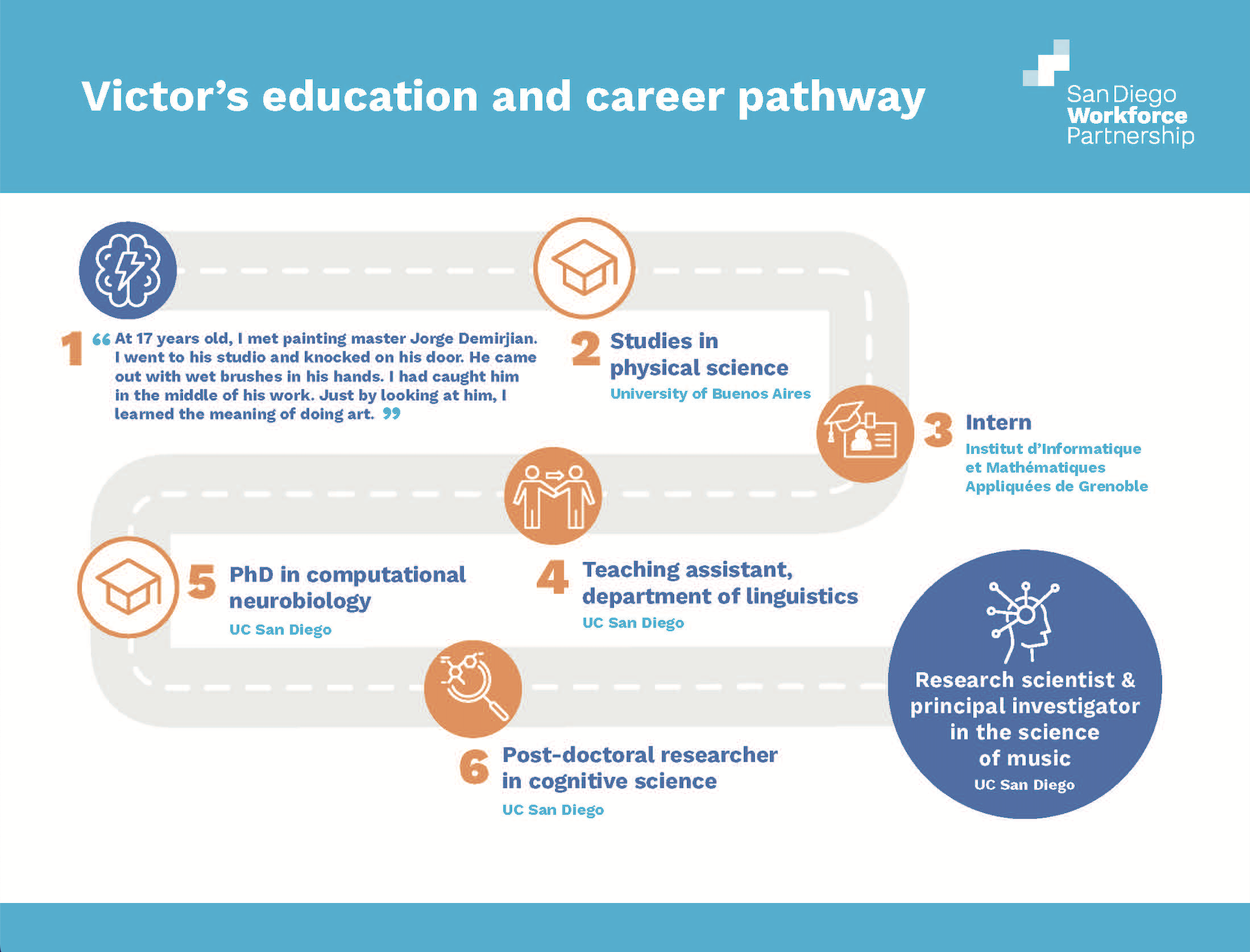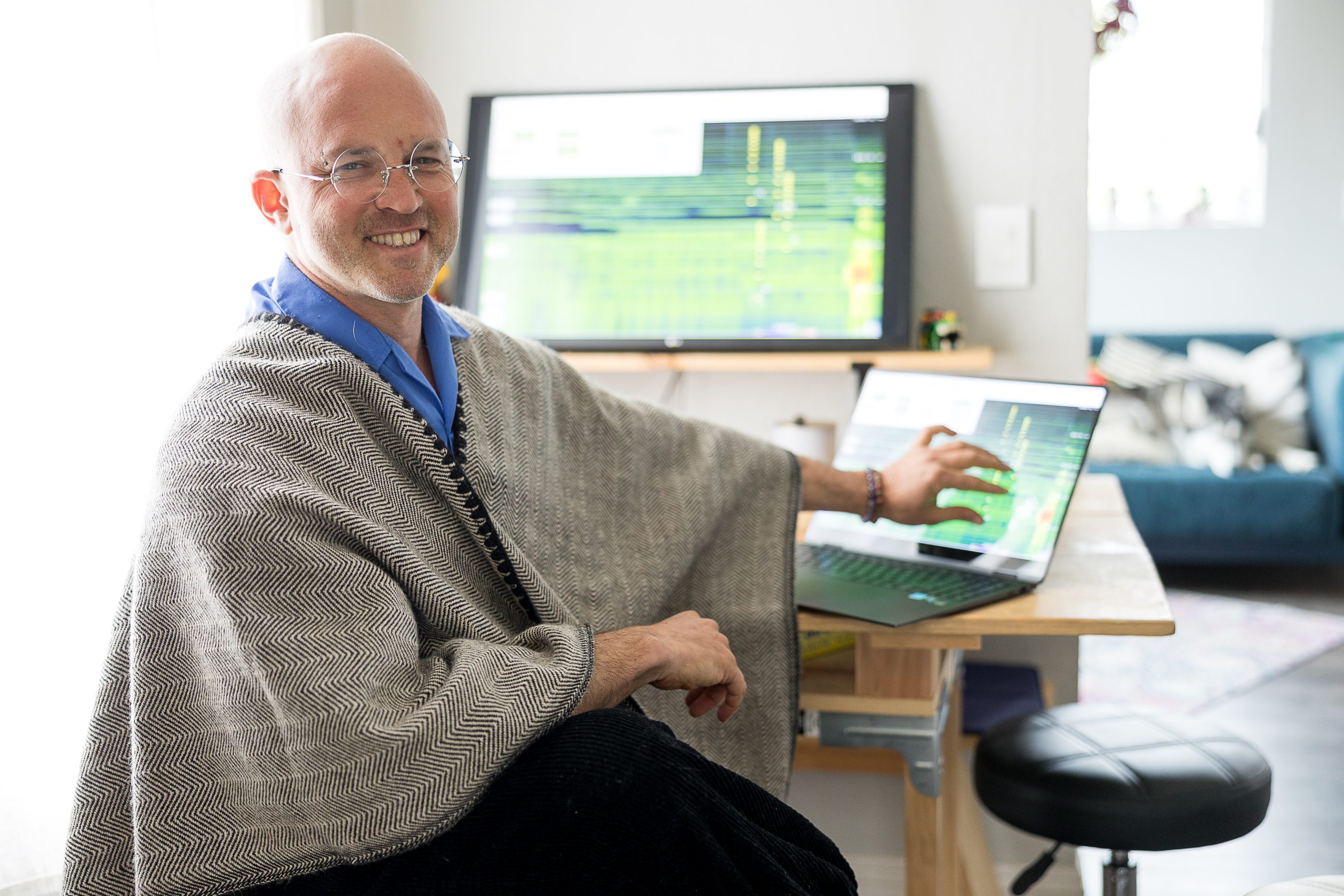Victor Minces
How did you get to where you are today? What was your training or education?
I grew up in Argentina and from elementary school through early high school, I loved art and science. In high school, the science classes were so dry and disconnected from my interests that they killed my love for science for a while. I stayed very engaged with the arts, so I started studying fine arts when I finished high school. After a few years, I began to be curious about science again, so I signed up to take some physics courses at the University of Buenos Aires. This was easy since college is free in Argentina and anybody can sign up and go, there is no exam or SAT. That said, the classes can be hard and not everybody has the time to commit to studying in a poor country. At the University of Buenos Aires, I fell in love with physics and the challenges of science, and I slowly switched from fine arts to physics. I eventually started becoming very curious about neuroscience too, because there’s a lot of overlap between physics and neuroscience.
I came to the US from Argentina when I was 27 years old to get my PhD in computational neuroscience at UC San Diego. For my PhD, I learned how to analyze the brain from a mathematical point of view to see how the brain encodes the physical world. I conducted experiments to see activity in the neurons of rats when they were presented with different sounds. It was really fascinating but I didn’t like working with animals. After that, there was an opportunity to start applying the skills that I learned in computational neuroscience to analyze how people’s behaviors change when they learn to play music and what happens in their brains when they hear or play rhythms. I did this type of research for a while, but I had the desire to have a more direct effect on society through my work. I was always interested in education and I didn’t want children to suffer as much as I did when I was in high school—when I had to study things that were so disconnected from my interests—that’s why I began bringing the science of music to schools to help make science classes more interesting. This is now the purpose of my life and work.

Describe your job. What does a typical week look like?
I work as a music scientist. My job is unique and I don’t think it existed before I created it, but it’s one of many jobs at the intersection of science and art. When I first showed children the things I liked about the science of music and I saw their eyes light up, I knew I was making an impact. I started a program called “Listening to Waves” to bring the science of music to schools so more children could experience it. In my program, we bring physical, hands-on activities related to sound all over San Diego, and we create web applications for people to analyze and play with sound, which are being used all over the country. Sometimes I meet with teachers and other people working in education to create curriculum. Other times, I train teachers and other times, I meet with students who are working on programming the applications.
Something I like about my job is that there’s no typical week. Beyond bringing the science of music to school, I am also working with a small team to develop a website. This is not a website you go to for reading information; it’s a website where you can touch the screen to create and play with sounds. Through playing with sound on this website, you can learn about how sound works and how to manipulate sound to create music. For building and maintaining the website, I meet with undergraduate student programmers to go over their work. I give them feedback like, “This part might be hard for users to understand, so let’s modify a few features” or I might suggest adding features to make it a more fun sound experience. We have four applications that you can play with on our website, listeningtowaves.com.
Right now I’m also creating a sound installation in Balboa Park. It’s a metal tree with pipes hanging down. Visitors can walk through the expanse of the tree, hit the pipes to make different musical notes and feel the vibrations fill their bodies. With installations like this one, my goal is to awaken a curiosity about the science of sound and music in the public.
What do you love most about your job?
Right now, I’m loving presenting at conferences. I’m very excited about this part of my work because I bring a bunch of objects like rubber bands, coffee stirrers and metal pipes to hand out to everyone in the audience. Then I ask each person to play one note with their pipes and I guide the audience to make music together. Imagine 300 people using everyday objects to make sounds that are quite surprising. It’s a lot of fun.

What advice do you have for others thinking about working at the intersection of science and art?
It’s easy to get lost in everyday tasks and go very far in a direction that’s not important. It’s like painting. I used to be a painter and sometimes you can get too close to your painting by focusing only on the details. When you step back, your painting might be horrible because all the details don’t make sense together. So it’s important to take a few steps back often, look at the big picture and decide how to move forward. It’s important to analyze your sense of purpose with your work regularly and remember, “Why am I doing this project? What is my purpose? Am I still headed there?”


